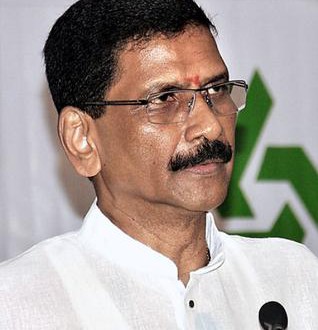By Gautam Pingle
An interesting historical fact has come to light which shows how politics in this state was planned and conducted. First, the issue which has to do with the number of Members of the Legislative Assembly.
The web site of the Andhra Pradesh Assembly, http://www.aplegislature.org/overview, says:
“Consequent to the formation of State of Andhra Pradesh the 140 Members of Andhra State Legislative Assembly and 105 Members representing the Telugu-speaking areas of Hyderabad State were merged together resulting in the formation of Andhra Pradesh Legislative Assembly. In 1956, the Andhra Pradesh Legislature was Unicameral with only a Legislative Assembly consisting 245 Members… Due to delimitation of constituencies several ups and downs have taken place in the number of elected Members of Legislative Assembly in Andhra Pradesh. In 1956 it was 245, in 1962 it was 300, in 1967 and 1972 it was 287 and from 1978 onwards it is 294.”
This is not entirely true, especially the figures relating to 1956. For, according to the Election Commission’s data (http://eci.nic.in/eci_main1/ElectionStatistics.aspx), the following statistics emerge:
For 1952, both regions were parts of larger States (Madras and Hyderabad) and the figures are approximate within one or two seats as some constituencies on their borders where split when their states were divided. However, the 1955 election was solely for Andhra State. In the 1956 election, Telangana region alone went to polls while being part of Andhra Pradesh state as the Andhra MLA’s term was still in force and which anyway was extended till 1962 (beyond their normal five-year term). However, in1962 and thereafter, both regions went to polls together.
As the Census figures show there is no population explosion in Seemandhra but a sharp increase in Telangana due to end of disturbed conditions created by the invasion by the Indian Army and and Communist insurgency and some migration (especially into Khammam district by Andhra settlers which was part of the 3.57 lakh increase in population – amounting to a 51% increase!). The increase in Hyderabad District (which contained the Capital city ) was only 2.45 lakh or 13.5 %, much less that the average growth in the region. This is proven by the fact that the parliamentary constituencies have not altered so radically as in the case of Assembly constituencies. Most of the increase between 1952 and 1956 came in Telangana and remained constant thereafter.
So how was and for what reason did the Andhra Assembly seats increase by 56, that is by 40%, between 1953 and 1955? And that too in advance of the Census of 1961 and the consequent delimitation.
It seems that after the 1951 Census it was obvious that the the Andhra region of Madras state had a population three times as much as the Telangana region of Hyderabad state, while it had only 1.4 times the number of Assembly seats. This would not matter if they were to be in different states – but if they merged this would give Telangana region an overwhelming advantage. So in order to avoid that the seats in Andhra Assembly were raised by 56 seats that is by 40% in early 1955 itself. That means that even by late 1954 the plans for merger were already set in motion and seats increased for the election to be held in February 1955.
Now some of our Telangana Congress leaders, having slept for the last four years, want to add another 38 Assembly constituencies. We already have 119 elected MLAs plus one Anglo-Indian nominated member _ 120 in all . For this reason they have raised the issue of the expansion of the Andhra Assembly in 1955 by 56 seats. That was one conspiracy, what is this latest?
The purpose clearly is to create more jobs for the boys, more salaries, more perks and more interferences in the administration with loss to public funds and profit and power to themselves. Telangana needs a lot more dedicated and self- sacrificing elected officials to accelerate development and meet the hopes of the long-suffering people.
They don’t need more MLAs. They already have 120 MLAs and that can support even a Legislative Council , if required, of 40 members (it must have a minimum of 40 and no more than two thirds of the Assembly).
With each MLA and MLC candidate reportedly spending crores of rupees on election expenditure the whole practice of people’s representation has become a business like any other. Yet there in no return on this investment, legitimately that is. Do we want to encourage more people into political office on this commercial basis?
Source: New Indian Express
 Telangana Talkies | Leading Telangana News, Movies & Entertainment Portal Website with the latest news from Telangana. We present to the world politics, movies, business updates from Telangana & the capital Hyderabad
Telangana Talkies | Leading Telangana News, Movies & Entertainment Portal Website with the latest news from Telangana. We present to the world politics, movies, business updates from Telangana & the capital Hyderabad

